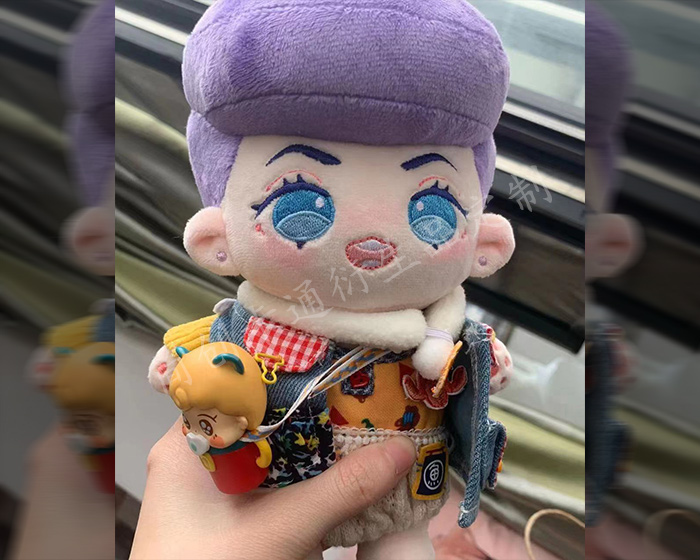Putting a stuffed animal in the washer can be a convenient way to clean it, but whether it’s safe depends on several factors. Understanding how to properly wash stuffed animals in the machine is essential for maintaining their appearance and ensuring their longevity. Here’s a detailed look at the considerations for washing stuffed animals in the washer and best practices for doing so.
1. Check the Care Label
The first step before washing any stuffed animal is to check its care label. This label provides crucial information on whether the toy is machine washable. Many stuffed animals can withstand machine washing, but some are made with delicate fabrics, embellishments, or stuffing materials that may be damaged in the washer. If the label specifies hand wash only or has special instructions, it’s best to follow those guidelines to avoid ruining the toy.
2. Assess the Stuffed Animal’s Condition
Consider the overall condition of the stuffed animal before washing it. If it is very old or has significant wear and tear, machine washing might not be advisable. In such cases, spot cleaning may be a safer option to prevent further damage.
3. Prepare for Washing
If the stuffed animal is machine washable, take the following steps to prepare it for washing:
-
Remove Accessories: Take off any removable accessories, such as bows, clothing, or any parts that could get caught or damaged in the wash.
-
Secure Loose Parts: If the stuffed animal has loose parts, such as buttons or eyes, consider securing them with a stitch or removing them if possible. This precaution helps prevent them from falling off during the wash cycle.
-
Use a Pillowcase or Laundry Bag: Place the stuffed animal inside a pillowcase or mesh laundry bag. This extra layer of protection helps prevent it from getting caught in the washing machine drum and reduces the risk of damage.
4. Choose the Right Washing Settings
When you’re ready to wash the stuffed animal, select the appropriate washing settings:
-
Gentle Cycle: Use the gentle or delicate cycle on your washing machine to minimize agitation and protect the stuffed animal’s shape and texture.
-
Cold Water: Always wash in cold water. Hot water can shrink fabric or damage stuffing materials, leading to a loss of shape or texture.
-
Mild Detergent: Use a gentle laundry detergent to avoid irritating sensitive fabrics. Avoid bleach or harsh chemicals, as these can discolor or damage the toy.
5. Drying After Washing
Proper drying is as important as washing when it comes to stuffed animals. Here are some drying tips:
-
Air Drying: The safest method is to air dry the stuffed animal. Lay it flat on a clean towel in a well-ventilated area, avoiding direct sunlight to prevent fading.
-
Using the Dryer: If the care label allows for machine drying, use a low heat setting and place the stuffed animal in a pillowcase or laundry bag. Adding dryer balls can help keep the stuffing fluffy and prevent clumping.
6. Post-Wash Care
Once the stuffed animal is dry, check for any remaining damp areas. Gently fluff and reshape it to restore its original form. If needed, use a soft brush to smooth out the fabric and give it a fresh look.
Conclusion
In conclusion, it can be safe to put a stuffed animal in the washer, provided that you follow the care label instructions and take proper precautions. By assessing the condition of the toy, preparing it appropriately, using gentle washing settings, and ensuring proper drying, you can effectively clean stuffed animals while preserving their quality. Regular cleaning not only keeps them looking good but also ensures they remain safe and hygienic for cuddling and play.
The following are some examples of plush toys that our factory customizes for customers. Check out if there is one that you like best.
-
Custom Animal Plush
-
Cute Plush Doll
-
Custom Stuffed Animals
-
Plush Toy
-
Plush Dolls
-
Custom Stuffed Dolls
-
Custom Plush Toy
-
Cotton Dolls
-
Weighted Plush Toys
-
Cute Stuffed Animals
-
Custom Pet Stuffed Animal
-
Warmies Stuffed Animals
-
Weighted Stuffed Animal
-
Soft Toys
-
Plush Stuffed Doll
-
Custom Stuffed Dolls
-
Plush Maker
-
Bear Stuffed Toy
-
Anime Plush
-
Custom Stuffed Animal
-
Anime Plush
-
Custom Plush Toy
-
Personalised Stuffed Animal
-
Plush Animal Toys
-
Custom Plush Makers
-
Custom Plushies
-
Toy Manufacturer
-
Rag Doll Making
-
Custom Toys
-
Dog Plush Toys
-
Custom Rag Doll
-
Stuffed Animals
-
Custom Plush
-
Custom Plush Dolls
-
20cm Cotton Doll
-
Jojo Plush
-
Custom Doll
-
Jojo Doll
-
Large Plush Toys
-
15cm Cotton Doll
-
Dumpling Plush
-
Cotton Doll


























